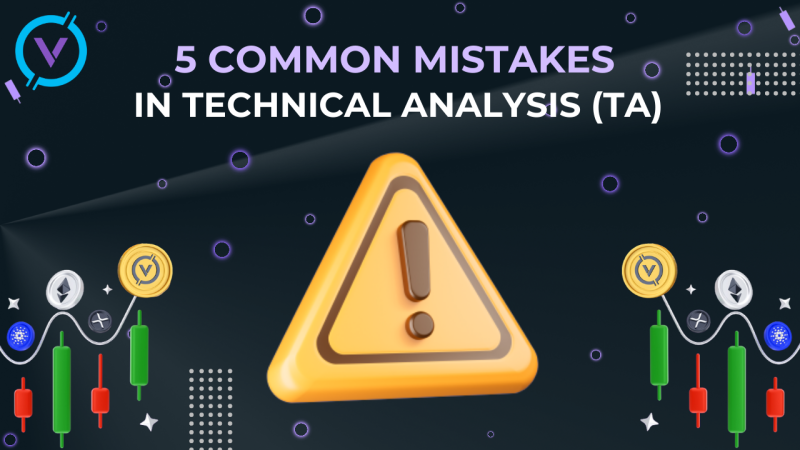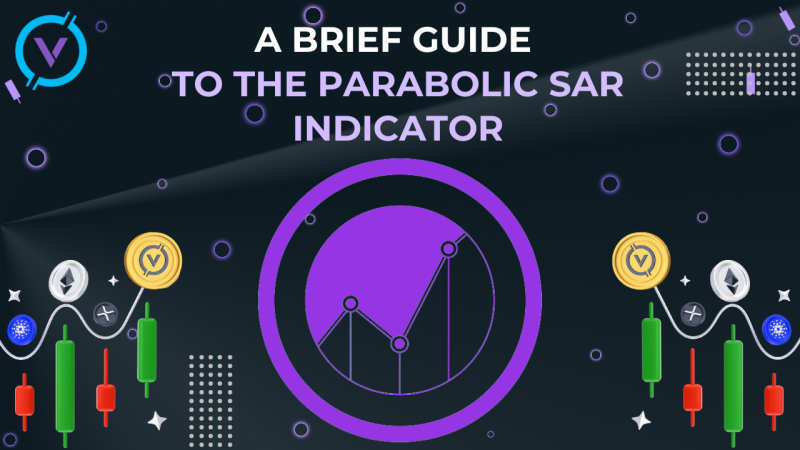We are sure that when choosing an indicator for cryptocurrency analysis, you will have (or have already had) many questions. This article will help you choose the best indicator and understand how it works. In fact, everything is very simple, and you will soon see for yourself.
First of all, you need to know that crypto trading is based on the analysis of two things: the current state of the price and prospects for price changes (trend) of a particular trading instrument.
What are indicators?
Indicators are models of price behavior that tell traders how the market situation will develop. Then, with the help of this information, trading strategies are developed. Indicators are also used to track news and changes in other markets that may affect the price.
How do Technical analysis indicators work?
Trading indicators are actively used by professional traders in the financial markets, including for cryptocurrencies. These tools combine well with popular strategies and analytics, provide additional data and help create a clearer picture of the market.
1. Relative Strength Index (RSI)
RSI (Relative strength index, relative strength index) — this is a technical analysis indicator showing the ratio of positive and negative changes in the price of a financial instrument.
RSI is one of the most common technical indicators. Investors like to use it because it is relatively simple to calculate and free from many significant drawbacks of other oscillators, such as the influence of old data (like Momentum) or the complexity of interpretation (like MACD).
The main task of the indicator is to analyze the strength of the price impulse and help in determining the level of overbought or oversold assets.
The RSI indicator "weighs the forces" of the growth and fall of the asset price. The following formula is used to calculate the RSI values:
RSI = 100 - 100 / (1+RS)
Initially, RSI was widely used in the stock market, but now it is also used for the cryptocurrency market, in particular for analyzing the price of bitcoin and any other trading instruments based on crypto assets.
2. Moving Average (MA)
Moving Average (MA) in technical analysis is an indicator based on the average value of the price for a selected period of time. MA refers to trend indicators, smoothing out volatility and helping to determine the direction of the price.
The MA indicator is applied not only to price data, but also to any other data, including trading volume, values of other indicators, statistics, currencies, commodities and other instruments.
When analyzing the cryptocurrency market, 50-day and 200-day moving average indicators are often used.
MA is one of the easiest to use and therefore popular indicators for technical analysis. Depending on the goals and trading strategy, different types of moving average are used:
- The Simple Moving Average (SMA) is calculated as the arithmetic mean of individual periods (minutes, hours, days, and so on) for a selected period of time. For example, to calculate the 100-SMA on an hourly chart, the indicator takes the price value of each individual hour, sums up the 100 previous values and divides by 100. For 20-SMA — sums up 20 previous values and divides by 20.
- Exponential Moving Average (EMA) is more sensitive to price changes. It is calculated as SMA, but prioritizes the near periods of data, and not those that are in the "tail" of the period. EMAS are used to estimate the front of the curve due to their priority to fresh data.
- The Smoothed Moving Average (SMMA) "gives" more weight to the data at the tail of the calculation period and much less weight for the near values. Due to this, the SMMA indicator is not so sensitive to impulses and smoothes the front part of the curve, paying more attention to the general trend.
- The Linear Weighted Moving Average (LWMA) primarily takes into account the fresh values of periods and reduces the importance of data linearly to the tail. LWMA is more sensitive to fresh data than EMA.
Moving averages are a fully customizable indicator, which means that the user is free to choose any time interval. The shorter the time interval, the more sensitive the moving average is to price changes, and vice versa. When setting up moving averages, there is no "correct" time interval.
The best way to figure out which one is best for you is to experiment with several different time periods until you find one that fits your strategy.
3. Moving Average Convergence Divergence (MACD)
The abbreviation MACD stands for Moving Average Convergence Divergence, that is, "convergence — divergence of moving averages". The indicator allows traders to both determine the strength of the trend and receive several types of signals for trading actions.
The indicator was developed in the 1970s by Gerald Appel, who determined its optimal settings.
The MACD shows the strength of the trend and indicates a change in trend directions.
How does he allow this to be done?
In an uptrend, the current price is higher than the average price for the selected time period. In a downtrend, on the contrary, the current price is lower than its average value for a certain period of time.
The dynamics of average price values can be displayed on the chart as a line. Such a line is called a moving average, or moving average. With an uptrend, the price chart runs above the moving average, and with a downtrend — below. The crossing of the moving average by the price chart may mean a trend change.
So, the trader just needs to watch when the price crosses the moving average line, and buy or sell securities depending on the direction of intersection. This is the basis for the strategy of trading on moving averages.
But this simple strategy also has drawbacks — due to random price fluctuations, there will also be random crossings of the moving average by the price chart, which can give false signals to buy or sell.
To eliminate the error, instead of the price chart, you can observe the intersection of moving averages with a short and long period.
4. Stochastic RSI (StochRSI)
The Stochastic RSI indicator (StochRSI) is the "indicator" of the indicator. It is used in technical analysis to calculate stochasticity by the value of the RSI indicator. This means that it is calculated using the maximum and minimum values of the RSI indicator for a selected period of time.
Stochastic RSI is an oscillator that calculates a value from 0 to 1, which is represented on the chart by a line. This indicator is primarily used to determine oversold and overbought zones.
It was developed by trader and president of Investment Educators Inc George Lane for trading in futures markets and described in detail in his book "Self-Managed Trading with Stochastics".
The indicator is designed to determine the momentum of the price. Lane himself, the speed of which certainly begins to decrease before the rocket falls down. Thus, the momentum always changes its direction before the price changes. The author notes that it is quite difficult to master such a method of determining the direction of the price, but it is possible if there is a desire and strength.
Mathematically, stochastic expresses the ratio between the closing price and the maximum-minimum range for a certain period as a percentage value from 0 to 100. A stochastic oscillator value of 80 or higher indicates that the closing price is near the upper limit of the range; a stochastic value of 20 or lower means that the closing price is near the lower limit of the range.
Accordingly, if the market has a tendency to close at the top of the daily range, then it is bullish, if at the bottom, then it is bearish.
5. Bollinger Bands (BB)
The Bollinger Bands trend indicator (Bollinger Bands indicator, BB indicator) is a classic trend indicator of technical analysis. Today it is one of the most popular indicators, it is very convenient to use and gives a lot of useful signals for traders, as well as determines the degree of volatility in the market very well.
Bollinger Bands (BB) is a volatility indicator in the form of a band of three lines based on a simple moving average (SMA). The middle line is based on the SMA, the upper and lower lines reflect the deviation from the average SMA.
BB is used to determine the relative lows and highs on the charts of stock and cryptocurrency prices, indices, commodities, options and futures. The tool is also used in relation to trading volumes, market momentum and statistical data.
The indicator assumes that finding the price near the upper line indicates overbought, finding the price near the lower line indicates oversold. Bollinger bands do not give buy or sell signals, but suggest and help determine the direction and possible momentum of future movement.
Bollinger bands build a "channel" on the chart that accompanies the asset price curve, and consist of three lines: middle, upper and lower. The basis for building BB is the average band, which is a simple moving average (SMA). The other two lines are denoted as positive and negative standard deviations.
Bollinger bands can be used for a variety of assets, including cryptocurrencies. This indicator is suitable for use on any period, including five-minute, hourly, daily, weekly and monthly. The selected period should have sufficient volatility for the use of BB to make sense.
To summarize
Technical analysis indicators have long been an integral part of it. They form the basis not only of manual strategies, but also of automatic Expert Advisors. No transaction in the professional market is complete without technical analysis and indicators of indicators.
Technical analysis indicators provide many opportunities, but it is important to remember about the successful component – always combine different indicators to get the most reliable signal.


